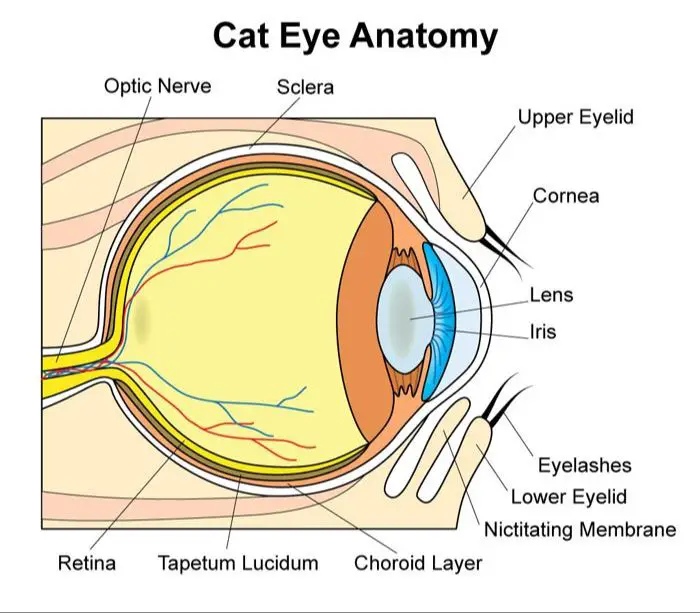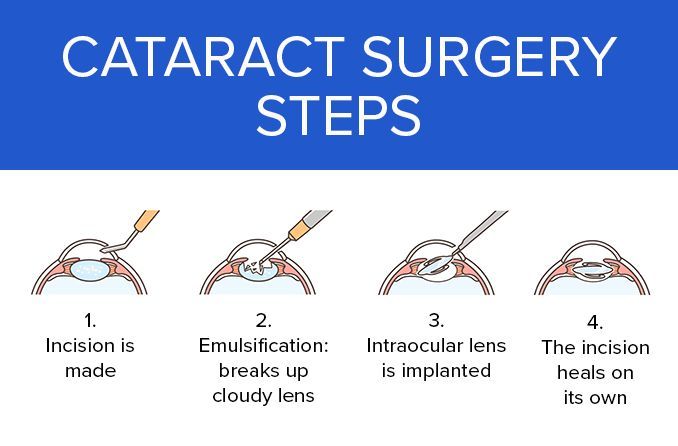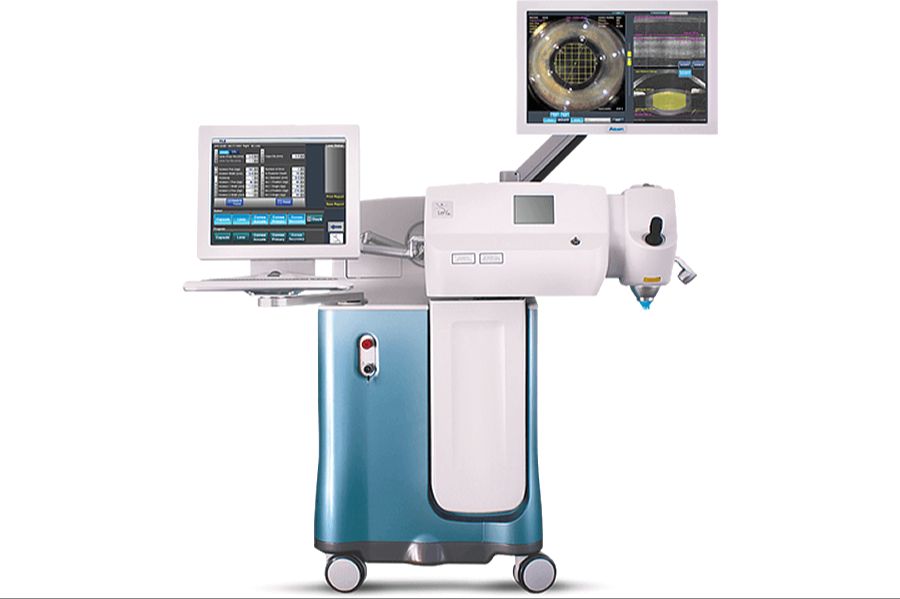A cataract is a clouding of the lens in the eye, which affects vision and commonly occurs with aging. Symptoms include blurry vision, sensitivity to glare, double vision, and faded colors. Cataracts are treated with surgery to remove the clouded lens and replace it with an artificial lens implant. There are two main types of cataract surgery – traditional/manual surgery and laser-assisted surgery.
Traditional cataract surgery involves making a small incision in the eye and manually breaking up and removing the cloudy lens using surgical tools. Laser cataract surgery uses a precision laser to create incisions and soften the lens, allowing for a more customized, computer-controlled treatment. While traditional surgery is generally effective, laser surgery offers potential benefits like faster recovery and more accurate results.
The main trade-off is that laser cataract surgery typically costs $1000-$2000 more per eye than traditional surgery. However, other factors like the type of lens implant used and insurance coverage can also impact the final cost. It’s important to weigh the risks, benefits, and costs of each method with your eye doctor to determine if advanced laser cataract surgery is right for you.
How Cataracts Develop
Cataracts occur when the lens inside your eye becomes cloudy, preventing light from properly passing through to the retina at the back of the eye. The lens is normally crystal clear, allowing light to come through and focus precisely on the retina so you can see images clearly.
As we age, the proteins that make up the lens start to break down and clump together, forming cloudy areas that cause blurry or faded vision. The lens also becomes less flexible and less able to change shape to focus light accurately.

There are several types of cataracts:
- Age-related cataracts are by far the most common and develop slowly over many years.
- Congenital cataracts are present at birth.
- Secondary cataracts are caused by diseases like diabetes or excessive UV light exposure.
- Traumatic cataracts develop after an eye injury.
Age is the biggest risk factor for developing cataracts. More than half of all Americans have cataracts or have undergone cataract surgery by age 80. Other risk factors include smoking, alcohol use, UV light exposure, diabetes, and certain medications like steroids.
Cataracts tend to develop gradually over years and cause vision to become painlessly blurry. Reading fine print, seeing at night, and distinguishing colors can become more difficult. Strong lighting and new glasses may help at first, but cataracts eventually require surgery for vision to be restored.
(Source: https://www.beyondvisioncenter.com/cataracts/)
Traditional Cataract Surgery
Traditional cataract surgery, also known as phacoemulsification, is the standard and most common procedure for removing cataracts. The steps involved in traditional cataract surgery are:
1. The eye is numbed with anesthetic drops. The patient remains awake during the procedure.
2. The surgeon makes a tiny incision on the side of the cornea, usually less than 3mm long.

3. They insert a small probe into the incision and use ultrasonic waves to break up the cloudy lens into small pieces.
4. The fragments of the natural lens are suctioned out.
5. The surgeon inserts a clear artificial intraocular lens (IOL) implant through the incision to replace the natural lens.
6. The incision is so small it usually does not require stitches and seals itself.
A traditional cataract surgery procedure typically takes around 10-15 minutes. Most patients experience improved vision soon after surgery. Full recovery takes about 4-6 weeks [1].
Laser Cataract Surgery
Laser cataract surgery uses laser technology to increase the accuracy and precision of some steps of the procedure compared to traditional cataract surgery. In laser cataract surgery, the surgeon uses a special laser called a femtosecond laser to create a perfect circular opening in the eye for removing the cataract (source). The laser can make incisions that are up to 10 times more accurate than a surgeon could make with a manual blade, allowing the surgeon to extract the cataract very precisely.
The laser also softens the cataract, helping to break it up for easier removal. This additional step with the laser lengthens the cataract surgery by about 5-10 minutes compared to traditional surgery. However, studies show laser cataract surgery results in quicker recovery times for vision than manual surgery. Most patients can return to their normal routine within 24 hours after laser cataract surgery.
Cost Differences

Traditional cataract surgery tends to be much less expensive than laser cataract surgery. According to UCF Health, the average cost for traditional cataract surgery is approximately $2,000-$3,000 per eye. In comparison, laser-assisted cataract surgery costs an average of $4,000 to $6,000 per eye due to the advanced technology involved.
Insurance coverage can reduce out-of-pocket costs for either procedure. Traditional Medicare typically covers about 80% of approved charges for cataract surgery, leaving a copay of around $500 per eye. For laser cataract surgery, out-of-pocket costs may range from $1,500-$3,000 per eye after insurance. Many private insurance plans have similar coverage to Medicare. However, copays and deductibles can vary, so it’s important to verify benefits with your provider.
Factors to Consider
When deciding between traditional cataract surgery and laser cataract surgery, there are several factors to weigh:
Pros of traditional surgery:
- Covered by insurance, lower out-of-pocket costs for patients (Omaha Eye)
- Established track record over decades of use
- Shorter learning curve for surgeons
Cons of traditional surgery:
- Less precision in some steps of surgery
- Higher risk of capsular tears and other surgical complications (Review of Laser-Assisted Cataract Surgery)
Pros of laser cataract surgery:
- Greater precision for certain steps like the capsulotomy
- Potentially better visual outcomes and lower risk of complications (Review of Laser-Assisted Cataract Surgery)
Cons of laser surgery:
- Higher out-of-pocket costs for patients
- May not be covered by insurance
- Longer learning curve for surgeons
When considering these options, patients should think about their eye health and ocular risks, visual needs and lifestyle, and budget. Those at higher risk of surgical complications may benefit more from laser surgery while patients on a limited budget will likely stick with the traditional option covered by insurance.
Potential Risks
Both traditional and laser cataract surgery come with some risks, though they are generally low with an experienced surgeon. Some potential complications include:

Eye inflammation – This is one of the most common risks. Both types of surgery can lead to swelling and inflammation in the eye, known as postoperative uveitis, but studies show a lower rate with laser surgery (source).
Corneal swelling – The cornea can swell after surgery, impacting vision. One study found a 7% rate of corneal swelling after traditional surgery and 3% after laser (source).
Bleeding and infection – Any surgery carries risks of bleeding and infection. Proper sterilization techniques minimize these risks in cataract surgery. Rates are very low for both traditional and laser methods.
Injury to the eye – Skilled surgeons are unlikely to damage eye structures during surgery. But any complications could potentially result in more serious injury. Laser surgery may have lower risks as it automates some surgical steps.
Overall, studies show laser surgery is as safe or safer than traditional cataract surgery. But an experienced surgeon is the most important factor for minimizing risks with either approach.
Results
Studies have shown that both traditional and laser cataract surgery result in significant improvements in visual acuity. One study found that after laser cataract surgery, over 95% of patients achieved 20/25 visual acuity or better (https://www.ncbi.nlm.nih.gov/pmc/articles/PMC5074708/). This level of visual acuity allows most patients to function well for daily activities without vision correction.
In comparisons of visual outcomes between traditional and laser cataract surgery, most studies have found no significant differences. One meta-analysis concluded that the two techniques had similar efficacy in regards to visual acuity, contrast sensitivity, and refractive outcomes (https://kataraktlaser.at/en/laser-cataract-surgery/).
While visual acuity results are comparable, some studies suggest potential advantages of laser cataract surgery in terms of faster visual recovery and improved quality of life in the early postoperative period. One study found patients who underwent laser surgery reported better visual function and less bothersome symptoms in the first month after surgery compared to those who had traditional surgery (https://www.ncbi.nlm.nih.gov/pmc/articles/PMC5074708/).
Overall, both traditional and laser cataract surgery are highly effective at restoring vision loss from cataracts. While visual outcomes are largely similar between the two techniques, laser surgery may offer some benefits in terms of faster visual recovery in the first few weeks after surgery.
Making a Decision
Deciding between traditional cataract surgery and laser cataract surgery ultimately comes down to weighing the benefits against the extra costs. The choice depends on a number of personal factors.
The most important step is to have an in-depth discussion with your ophthalmologist about which option may be right for your specific case and eye health history. Ask questions about the potential advantages of laser surgery and whether they would significantly impact the outcome for you. Also inquire about any increased risks from laser. Your doctor can provide guidance based on your eye condition and their surgical experience.
Consider your budget and whether the additional out-of-pocket expense of laser surgery, which may range from $500-$2,000 per eye, is feasible for you. Many patients feel the benefits are worth the extra cost, but this is an individual choice.
You may want to understand whether laser surgery is likely to provide substantially better visual acuity or reduce chances of needing glasses or contacts after surgery. While laser allows the surgeon more precision, outcomes are generally excellent with both traditional and laser techniques.
Think about your own tolerance for risk or desire to have the most advanced procedure. Remember that traditional surgery has an excellent safety record and laser techniques are still evolving.
With your doctor’s input, weigh all these factors, and discuss options with family or trusted friends. Make the choice you feel most comfortable with to achieve the best cataract surgery results possible.
The Future of Cataract Surgery
Cataract surgery techniques continue to advance rapidly, with new technologies emerging that aim to improve precision and efficiency while reducing complications. According to Dr. Zane Lazer of The Eye MDs, there is growing interest in new technologies like presbyopia-correcting implants, toric implants, and laser cataract surgery (Lazer). These types of advancements are likely to become more widespread in the coming years.
One particularly promising area is femtosecond laser-assisted cataract surgery. As explained in an article from Cake Magazine, femtosecond lasers allow surgeons to create precise, customized incisions in the cornea and lens capsule (Lee). This improves accuracy and consistency compared to manual techniques. There is also evidence that laser cataract surgery reduces complications like posterior capsule tears. As the technology continues to be refined, laser cataract surgery may become the new standard of care.
Looking further ahead, researchers are exploring how techniques like optical coherence tomography (OCT) and artificial intelligence could transform cataract surgery. Integrating these technologies into the surgical process can give surgeons enhanced visual guidance and automation. This has the potential to take precision and customization to new levels. While still largely experimental, advances like these show how cataract surgery will likely continue getting safer, faster, and more tailored to each patient.

